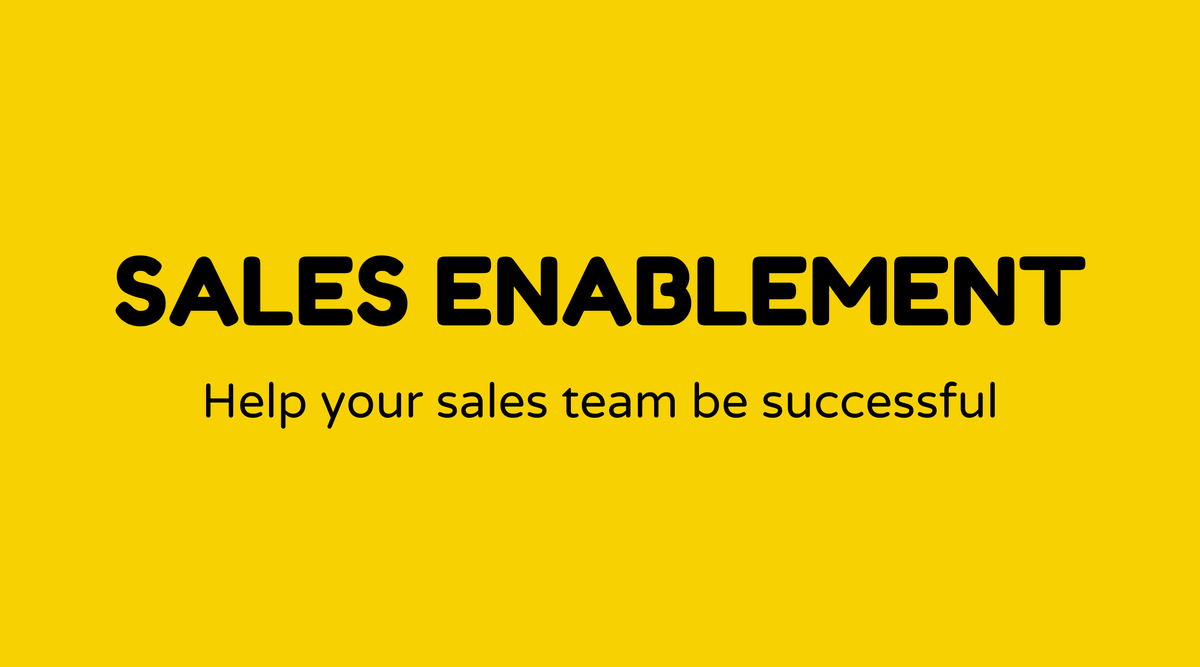Sales enablement

Overview of Sales Enablement:
Sales enablement is an essential aspect of today's competitive business environment. It involves equipping your sales team with the necessary tools, resources, and information to effectively close deals and generate revenue. Consider it a means of providing your salesforce with a comprehensive toolkit—comprising insights, training, and content customized to the needs of their prospects. In this digital era, where information is abundant and attention spans are brief, sales enablement assists sales professionals in not only reaching potential customers but also engaging with them effectively.
For businesses, applying sales enablement is akin to guiding a well-functioning machine along a digital pathway—not only does it streamline processes, but it also boosts productivity. However, the journey is just as significant as the outcome. Efficiency, relevance, and adaptability are vital.
Investigating platforms such as HubSpot or Salesforce reveals practical case studies and frameworks for those beginning or refining their sales enablement efforts. Sources like Forbes and HubSpot frequently publish informative articles that keep readers updated on the latest trends in sales strategy.
Why Sales Enablement Matters:
Why should we prioritize sales enablement? Imagine a leaky faucet with revenue trickling away due to inefficiencies, unprepared sales representatives, and misrepresented value propositions. Sales enablement is like a skilled plumber who comes equipped not just with tools, but with comprehensive solutions to prevent leaks and optimize the flow.
Sales enablement is crucial because it aligns the objectives of sales and marketing teams, ensuring consistent messaging and that everyone communicates effectively. This cooperation leads to better communication with prospects, improved customer experience, and ultimately, increased conversion rates.
Research indicates that when sales and marketing teams are aligned, they can generate up to 208% more revenue. Achieving this alignment through effective sales enablement can lead to higher revenue outcomes.
What is Sales Enablement:
At its essence, sales enablement is about providing sales teams with the resources necessary for greater selling efficacy. This includes access to market insights, industry trends, customer data, content, and technology—all fine-tuned to optimize the sales process.
Sales enablement encompasses a dynamic combination of functions, including onboarding and training, process enhancement, and technology application, tailored to align with the company's market and strategic goals. It represents a harmonious blend of sales approaches and cutting-edge tools striving for effectiveness.
By prioritizing personalized content creation, CRM systems, and analytical tools, companies can ensure they grant their teams a competitive edge. Sources like Gartner and LinkedIn regularly publish surveys and reports showcasing how organizations successfully apply sales enablement strategies.
How to Implement Sales Enablement:
Initiating a sales enablement strategy might appear overwhelming, but it’s all about dissecting it into manageable steps. Here's a straightforward guide:
-
Align Sales and Marketing Objectives: Ensure both departments share a common vision and mutually agreed goals. Open, transparent communication is essential.
-
Assess and Apply Technology: Utilize suitable technology to streamline processes. This could include a robust CRM system, content management tools, or data analysis platforms.
-
Generate Relevant Content: Create customer-centered content that empowers sales teams to address customer challenges efficiently. This may include case studies, whitepapers, presentation decks, and more.
-
Training and Coaching: Conduct ongoing training sessions focusing on product knowledge, sales methods, and customer engagement techniques.
-
Measure and Optimize: Regular evaluation of sales processes helps pinpoint what works and where there is room for improvement. Analyze metrics like lead conversion rates, sales cycle duration, and win rates.
-
Feedback Loop: Promote a culture of feedback in which sales and marketing teams can share insights and challenges openly.
Examples of Sales Enablement:
Let’s illustrate this concept with some examples:
-
Content Libraries: A centralized resource where salespeople can easily access brochures, presentations, or case studies tailored for different industries or customer profiles.
-
Interactive Tools: Applications such as ROI calculators or assessment quizzes that salespeople can employ with prospects to demonstrate value.
-
Success Stories: Sharing success narratives within the sales team to motivate and provide a framework for effective sales techniques.
-
Training Modules: Regular training sessions, possibly gamified for engagement, that keep the sales force informed on products and the latest market developments.
FAQs
Do we need technology for sales enablement?
Yes! Technology plays a key role in organizing data, automating processes, and providing sales teams with current market insights.
How can small businesses benefit from sales enablement?
Even at a smaller scale, aligning sales and marketing, optimizing data utilization, and offering targeted training can greatly enhance efficiency and sales effectiveness.
What's the role of content in sales enablement?
Content serves as a critical resource for the sales team to educate and engage prospects, addressing their unique challenges while illustrating the product's worth.
Is sales enablement exclusive to B2B companies?
Not at all. B2C companies can also reap the benefits by equipping their sales teams with insights and strategies tailored to consumer purchasing habits.
Can sales enablement enhance customer experience?
Yes! By ensuring sales teams have all necessary insights and tools, customer interactions can be made more personalized and effective, vastly improving the overall experience.
How long does it take to implement a sales enablement strategy?
The duration can vary, but having a clear plan and phased approach is essential, typically requiring a few months to see notable outcomes.



